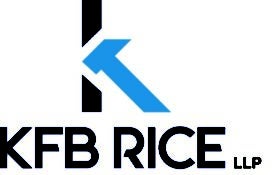Hurricane Disaster Relief and Donations: Helping an Employee in Need
Harvey was only the beginning. With Hurricane Irma terrorizing Florida and the East Coast, the need for disaster relief is more crucial than ever. Many employees have been impacted by the hurricanes, and while FEMA and insurance agencies are designed to help relieve some of the impacts, such relief takes a long time to arrive. However, employers can take matters into their own hands. Here are several ways to help an employee in need:
Qualified Disaster Relief Payments
Qualified disaster relief payments (QDRPs) were created to provide a clear income tax exclusion for employer-funded relief payments to victims affected by federally-declared natural disasters and other catastrophes like the September 11 terror attacks. QDRPs allow employees affected by Harvey and Irma to receive quick cash payments from employers without being taxed on those payments. Generally, these payments are deductible business expenses for employers.
QDRO’s are a simple and direct option to provide aid to employees in need, without raising the suspicion of the IRS. However, there are still important requirements employers must follow if they choose to make QDRPs. Employers should contact an attorney to discuss these requirements before providing QDRPs to impacted employees.
Loans
A low-cost way of helping employees in need is to provide no-interest or low-interest loans. Such loans must be properly documented and will result in some additional taxable income to the employee.
Additionally, under rules recently announced by the IRS, employers can allow loan distributions from 401(k) plans.
Employees Helping Employees
There are several ways an employer can facilitate donations from employees unaffected by the hurricanes. Here are a few examples:
Creating a crowdfunding project to receive donations. Crowdfunding is a very popular way to raise money for new ideas, businesses, and charitable donations. The benefits of crowdfunding are simplicity and speed. However, this approach is not as cost-effective as some alternatives. Crowdfunding sites such as Kickstarter, GoFundMe, and Indiegogo impose fairly substantial administrative fees for their services. Additionally, crowdfunding does not yield favorable tax benefits to donor employees like the following approach.
Establishing a 501(c)(3) nonprofit corporation to receive and disburse donations. This approach creates the best tax results for all parties involved. However, there are some drawbacks. First, setting up a new charitable organization requires an initial time commitment. Second, this approach presupposes an ongoing charitable mission, meaning an employer wouldn’t want to take this route to provide relief for a single disaster situation.
A way of avoiding these drawbacks while still achieving the same tax advantages as a 501(c)(3) entity is for an employer to establish a fund under an existing charity. The existing charity would be responsible for distributing the funds, but the employer would still have significant input on the disbursement.
Employers who want to help provide relief to employees impacted by recent hurricanes have many options at their disposal. While some of the options have been mentioned above, it is important for an employer to review all avenues and decide what is best for them and their employees. Seek advice from an attorney today.
